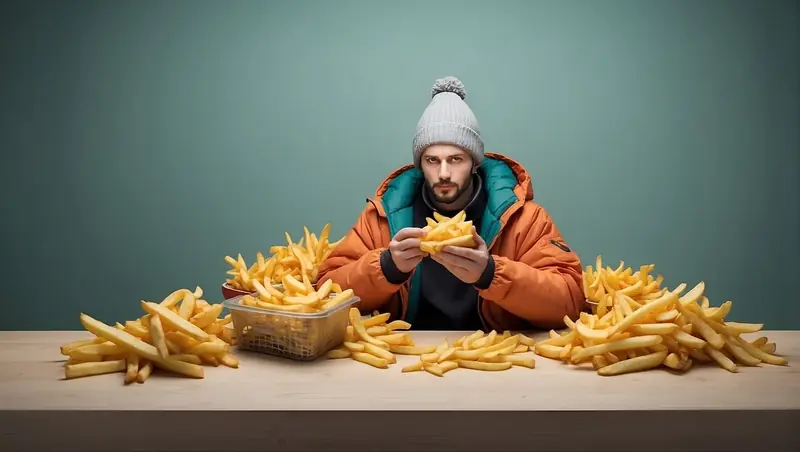
A team of researchers from York University’s FixOurFood program and the British retailer Co-op has unveiled what our food might look like in just a few decades. Ultra-realistic images generated by the Midjourney neural network are sure to leave a lasting impression.
Currently, Earth is suffering from human-induced impacts, including greenhouse gas emissions, the use of non-renewable energy resources, and water and air pollution. If humanity doesn’t change its ways soon, a planetary catastrophe is inevitable. These changes will also need to extend to our diets.
According to AI predictions, by 2054, we will shift to more environmentally friendly dishes produced with minimal or even zero carbon footprints. Among these will be salads featuring insects (like crickets and ants), seaweed pasta, and lab-grown meat. These products are safer for the Earth’s ecology than the foods we currently consume. Thus, such a diet could potentially help save the planet. But will we be able to eat all of this?
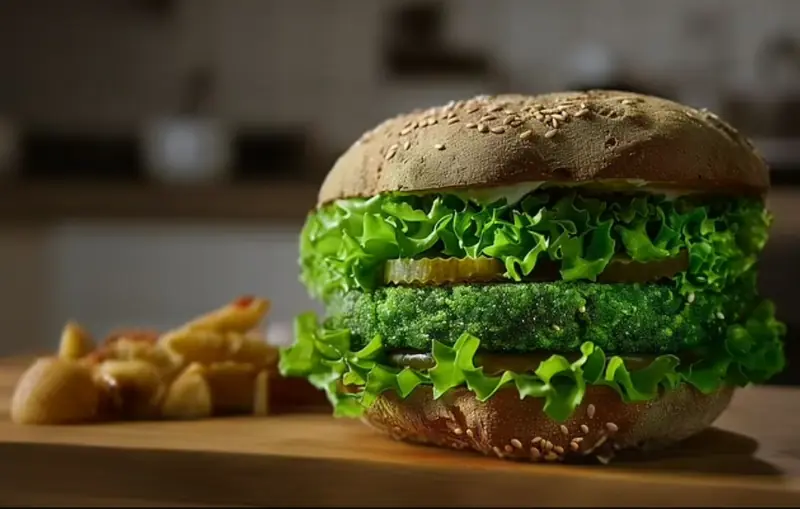
Crickets, Worms, and Other Insects
Researchers are confident that this type of food could completely replace our beloved family meals, such as Sunday roasts or fish and chips.
“Over the last thirty years, we have witnessed a scientific breakthrough in the production of eco-friendly foods that would have seemed unbelievable to most people back in 1994,” said Bob Doherty, director of the FixOurFood program. He added that since red meat and dairy products are responsible for a significant portion of greenhouse gas emissions, insects will serve as a great alternative.
Crickets, locusts, grasshoppers, worms, ants, termites, and cicadas are environmentally friendly because they consume fewer natural resources than livestock and are a healthy substitute for meat. Recently, they have been actively promoted as a new superfood. This makes perfect sense, as insects are a source of protein, potassium, and magnesium; they contain three times more fatty acids than omega-3s found in salmon.
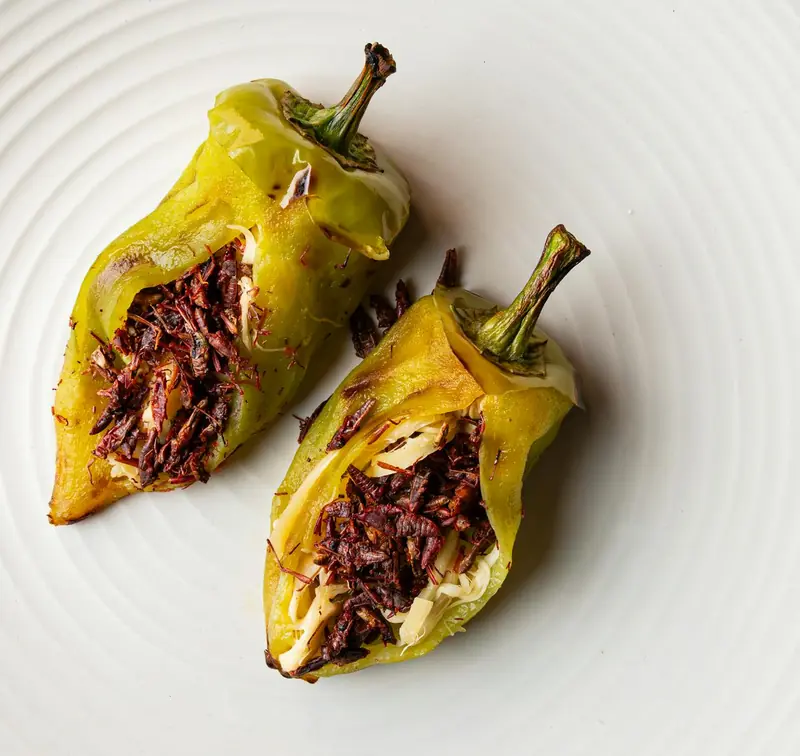
Lab-Grown Meat
Lab-grown meat still faces legal and regulatory hurdles. However, the team believes that by 2054, humanity will overcome these challenges and consume this product without issues.
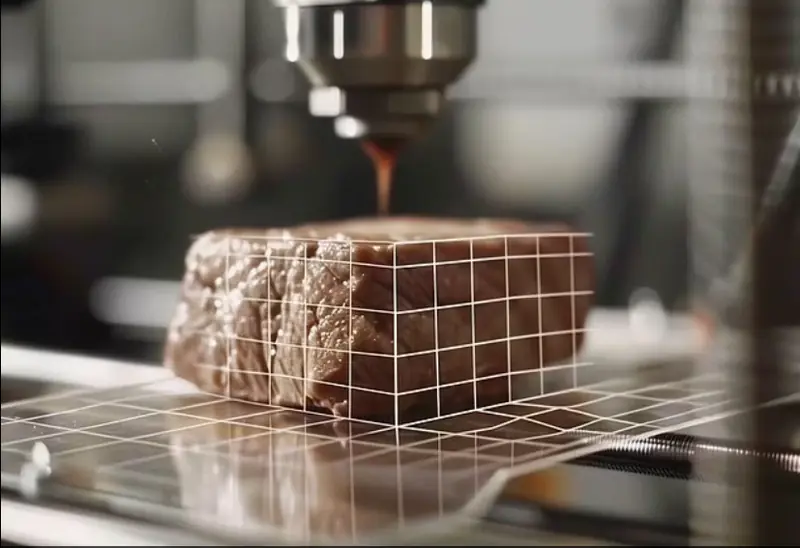
The so-called “test-tube meat” is an alternative to meat from real animals. According to the Daily Mail, the taste is nearly indistinguishable. To produce lab-grown meat, scientists take a sample of cells from a living animal and cultivate it into a meaty mass. This method uses fewer resources and requires less space.

Although lab-grown meat has never been sold in stores, British scientists assure us that it will soon become commonplace. They also believe that lab-grown meat can be shaped into burgers or steaks using food 3D printers.
Interestingly, some industry experts predict that food 3D printers will soon become standard kitchen appliances, alongside toasters, microwaves, and deep fryers.
Sea Plants
While fruits and vegetables have lower emissions than meat, the team is concerned that climate change will make popular products like avocados less accessible.
Therefore, researchers expect that unusual types of sea plants, such as the lesser-known water fern Azolla, will serve as alternatives. It can capture carbon dioxide and is believed to be more resilient to climate change than the plant products we are accustomed to. This is the view of scientists at Yale University (USA).
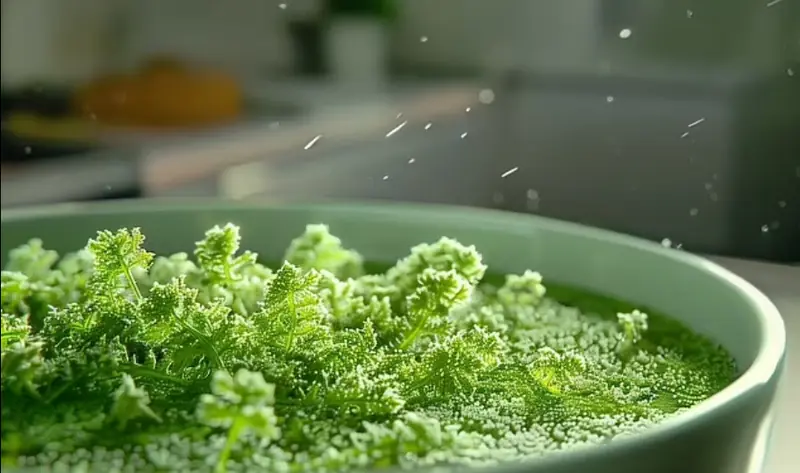
Meanwhile, participants in the FixOurFood program have described Azolla as a plant with a “crunchy texture” and an “earthy flavor reminiscent of the forest.”
By the way, Azolla can also be conveniently printed on a 3D printer, taking familiar forms like spaghetti, meatballs, and burgers. As shown in the AI-generated images, Azolla makes a beautiful base for a nutritious soup.
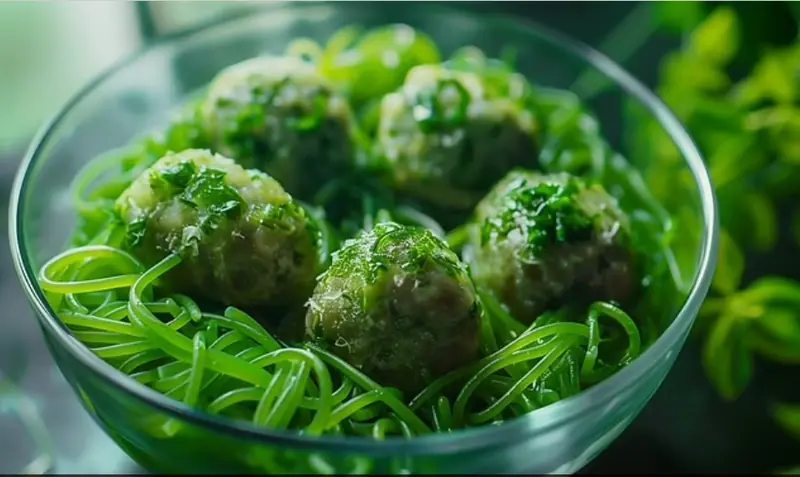
In their research report, the team noted that 72 percent of consumers are increasingly concerned about ethical and eco-friendly food products, compared to just 54 percent in 1994. Experts assert that this number will continue to grow in the coming years.
